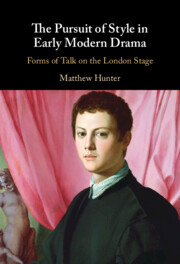Chapter 1 - Stage Talk
Published online by Cambridge University Press: 26 August 2022
Summary
Stage talk is a style that makes theater out of one’s own mastery of talk by generating a density of formal coherence in place of the messiness that ordinary conversation entails. As Erving Goffman has proposed, “[e]very transmission … is necessarily subject to ‘noise.’” In conversation, this noise manifests as interruptions, overlaps, false starts, rewinds, and other influencies. And yet we manage to filter out such static as extraneous to the conversation at hand, often with such success that we might be surprised to discover their inclusion in a transcript of what we had just experienced. Stage talk aestheticizes the idealization of form that subtends representations of speech: It purifies the noise that defines ordinary talk – interruptions, false starts, gaffes are gone – in order to impart utterance a conspicuous poetic coherence. The actor who delivers this language to audiences assembled at a playhouse constitutes the early modern period’s animating fantasy of publicness, which is the fantasy that a style of talk can turn one from a stranger into a spectacle for other strangers to imitate.
- Type
- Chapter
- Information
- The Pursuit of Style in Early Modern DramaForms of Talk on the London Stage, pp. 41 - 80Publisher: Cambridge University PressPrint publication year: 2022



